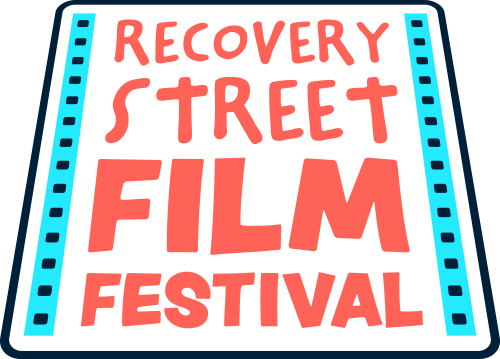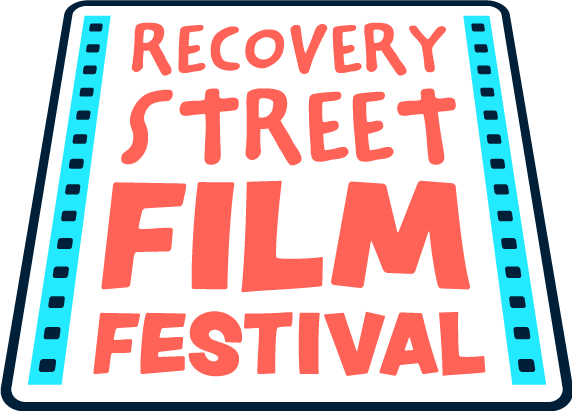Blog: A moment with...
Making a film can seem like a daunting task, something that requires years of experience and a huge budget to do it justice. While that may be true for a big, Hollywood blockbuster, using film to tell your story can actually be pretty easy.
In 2016 I made a short film submission for the Recovery Street Film Festival about one of the service users I worked with, unfortunately the film wasn’t shortlisted but I got a lot from the experience and found the process quite enjoyable. The film also acted as an opportunity for the service user to tell his story, which he was still coming to terms with. This experience gave him a chance to work through some of the feelings he still had bottled up inside.
This year, I set out to make a 2 minute film clip to help promote the Recovery Street Film Festival (RSFF) and share the story of one of our supporters, Kav. ‘A moment with…’ gives a quick glimpse into the lightbulb moment of Kav, as well as explain why he thinks the film festival is an important thing to be part of. While the film itself is quite short, it did take a bit of planning to make sure it came together as a cohesive piece.
I followed some very simple steps and used some online resources to help me out. The first thing I did was create a storyboard using the free download template on the RSFF website. This is a really simple document, which spaces out boxes for each scene you want to have in your film and you can add as many scenes as you like.
A storyboard can be simple and easy
Each box represents a scene and in it you can describe what you want to see, what direction you want the camera to go (maybe you want to move in close to the person or move along them as they stand still) and any notes about the setting (whether it’s night time or outdoors, for example). There is no need to be an amazing artist, just as long as you can understand what you want the scene to look like. There is a great short clip about storyboarding on the RSFF website, which I found really useful.
Once I had the basic idea of what I wanted to see and how I thought the film would look, I could start to think about where I wanted to shoot it (this helped me update the storyboard a little more and made sure I was being realistic about my film…that scene over Niagara Falls was suddenly cut!
I spent a few hours out and about near my office to film some background images (or b-roll), which I could then use to fill in some of the film and make it a little more interesting to watch. Luckily the weather held off and I managed to get some decent clips of the local area…if the weather hadn’t been so good then I could have filmed indoors or used the weather to add a ‘moody’ effect to the footage.
Everything I filmed was on my smartphone with no special equipment and no fancy filters. Using a smartphone is a great way to get some really easy footage, which can then be edited together in any number of film making apps (more on this in a minute).
Again, I watched some of the tutorial film clips which can be accessed on the RSFF website or through YouTube and these gave me an idea of how to hold the camera (holding it closer to you makes the image more steady) and making sure the phone is held in landscape mode (like you’re watching a film on it).
Once I had the footage I needed to fill up the gaps in my storyboard, I moved on to filming the actual scenes with Kav. I arranged to meet him outside so that I could get a final bit of b-roll with him in, this would work really well when I had a voiceover to include but wanted to make the film flow differently. We met up, and after the b-roll footage, went to a local coffee shop (I had spoken to them earlier and checked it was ok to film, this is probably a good thing to do if you are filming in a public space like a coffee shop or restaurant). This was the only time I chose to use two pieces of additional equipment – a tripod for the phone and a microphone (as we were filming inside a shop there was some background noise I wanted to try and reduce).
I had the storyboard close by and went through this with Kav so that he understood what we were trying to achieve through the film (we even used it as a prop in the shot above). This also made it easier to direct scenes as Kav knew what was coming next and could respond appropriately.
Filming the talking scenes were a lot of fun and I must admit, I felt like a proper film director! It was good to see my ideas from the storyboard coming to life and being able to follow each box made the whole process so much easier. I was able to make sure I didn’t forget anything as I wanted to avoid another day of filming.
Once I had all the footage, I arranged for Kav and I to use a quiet room in my office so I could record some voiceover clips to use in the film…these just help break up the footage and as I said earlier, were great to use alongside some of the b-roll footage. Again, I used a smartphone and just used a voice recorder app, which I downloaded for free from the app store.
That was it, I was done…the raw components of my film were ready to be put together in some kind of order and then shared with the world! So how was I going to put it all together and make it work as a film clip people would sit and watch?
There are a range of free apps to download
I used a free app called PowerDirector (available in the play store), which allows you to import a range of images, film clips and audio clips, along with some effects that come as part of the free package (there are premium options if you want to pay and this gives you a few more features but nothing that you need to make a simple, short film clip). What I find really good about this particular app, is that you can layer different clips and images together so you can transition from some b-roll footage to a talking head and back to b-roll really simply (the app even gives you transition effects to make it easier).
For my film I used a free soundtrack website, which you can download a variety of free songs from, without the need to mention the owner. The app also allows you to mix the audio so that you can lower the volume of the music while there is talking going on and then increase it again…it gives you complete control over how your film clip looks and sounds.
I probably spent about 2 days in between other tasks editing the film clip and then checking with Kav that he was happy with it before I went ahead and produced the final version to share. All in all this was an easy and enjoyable process and I think the end result works really well…but you can be judge of that! You can watch the final film clip below:
For more information about the film festival, as well as how to submit your own film for the 2018 competition, visit our website. Submissions are open now and will close early August.




